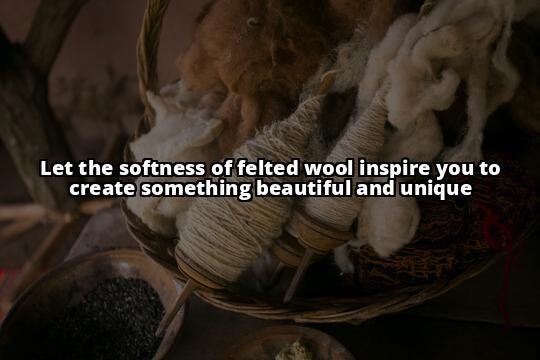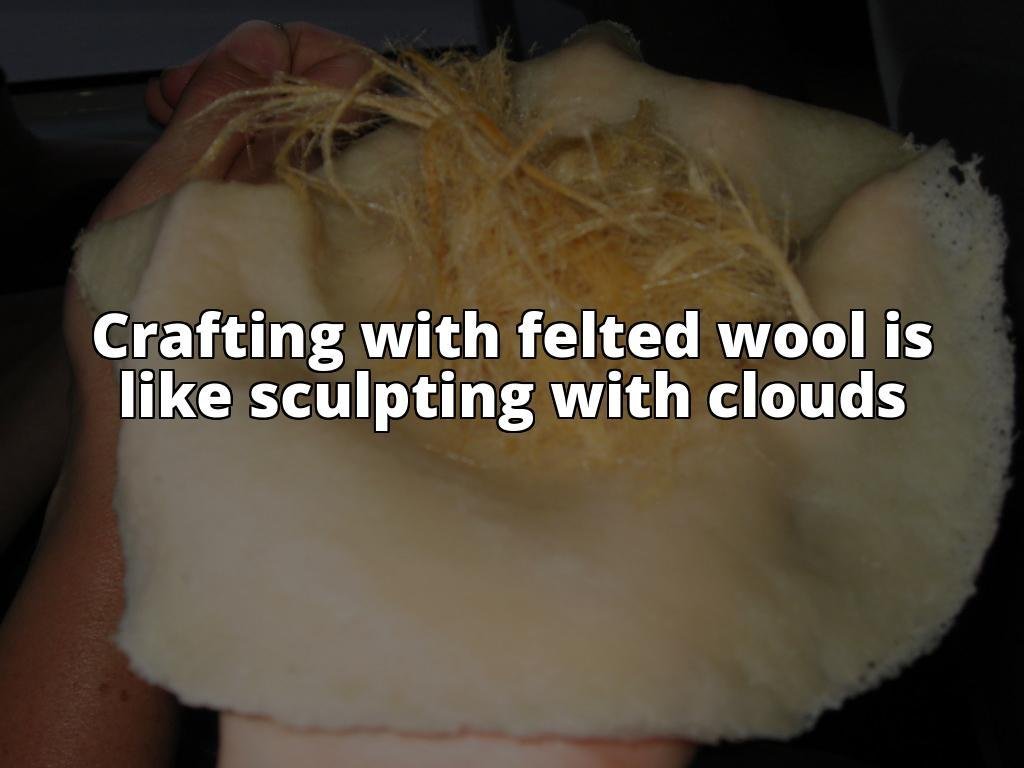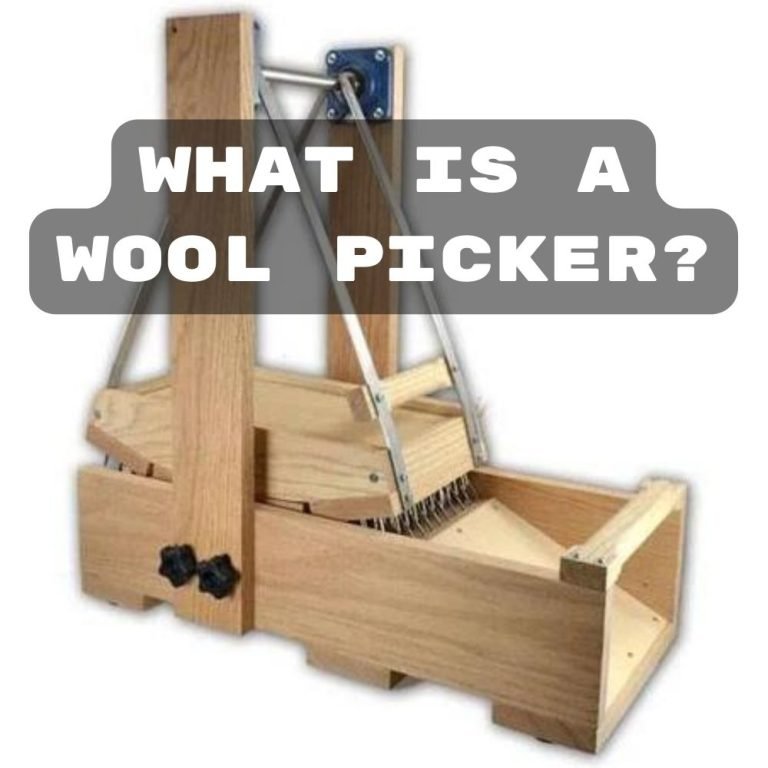Crafting with Felted Wool: Everything You Need to Know
Are you curious about what felted wool is and how to use it in your crafting projects? Felted wool is a versatile material that can be used to create a range of items, from hats and scarves to bags and jewelry. In this article, we’ll provide a comprehensive guide to felting wool, including its definition, types, benefits, tools and materials needed, step-by-step instructions on how to make felted wool, crafting projects using felted wool, tips to care for it, and some insider tips.
What is Felted Wool?
Felted wool is a dense, matted material that’s made by subjecting wool fibers to heat, moisture, and pressure. The process of felting wool causes the fibers to bind together and form a non-woven fabric. The result is a sturdy and durable material that has many uses in crafting.
What is Felted Wool?
- Felted wool is made by compressing and matting wool fibers together until they form a dense fabric.
- There are three types of felting: wet, needle, and nuno.
- Felted wool is durable, versatile, and eco-friendly, making it a popular material for crafting projects such as hats, scarves, bags, and jewelry.
Types of Felted Wool
There are three main types of felting wool: wet felting, needle felting, and nuno felting.

Wet Felting
Wet felting is the most common form of felting and involves using water and soap to agitate the wool fibers until they bind together. The process starts with laying out a layer of wool fibers in one direction and then adding another layer at a right angle to the first layer. The wool is then wetted with soapy water and rolled up tightly in a towel or bubble wrap. The bundle is then rolled between the hands or on a flat surface until the wool fibers interlock and create a dense, felted material.

Needle Felting
Needle felting is a method that involves using a special needle to interlock the wool fibers and create a felted shape. This involves using a needle with barbs on the end that catches the fibers and tangles them together. The process starts with a base of wool fibers, which is then built up with more wool fibers until the desired shape is achieved.
Nuno Felting
Nuno felting is a combination of wet and needle felting and involves attaching wool fibers to a base fabric using water and a felting needle. This technique allows for more intricate designs and patterns to be created.
Benefits of Felted Wool
Felted wool has several benefits that make it popular in crafting.
Durability
One of the main benefits of felted wool is its durability. The process of felting wool makes it denser and more resistant to wear and tear, making it ideal for items that will be used frequently.
Versatility
Felted wool is highly versatile and can be used to create a variety of items, including hats, scarves, bags, and jewelry. It can also be dyed to create a range of colors and patterns.
Eco-Friendliness
Felted wool is an eco-friendly material as it is made from natural fibers. It is also biodegradable, making it a sustainable choice for crafting.
Tools and Materials Needed
To make felted wool, you’ll need the following tools and materials:
- Wool fibers
- Soap
- Hot water
- Felting needle
The type of wool fibers you use will depend on the type of felting you want to do. For wet felting, you’ll need wool roving, which is wool that has been carded and is ready to be spun or felted. For needle felting, you’ll need wool batting, which is wool that has not been carded and is fluffy in texture.
How to Make Felted Wool: Step-by-Step Guide
Preparing the Wool Fibers
Before you start felting, you’ll need to prepare the wool fibers. For wet felting, lay out the wool fibers in one direction and then add another layer at a right angle to the first layer. For needle felting, tear off a small piece of wool batting and roll it into a ball.
Wet Felting Process
To wet felt wool, you’ll need to follow these steps:
- Wet the wool fibers with hot, soapy water.
- Roll up the wool fibers tightly in a towel or bubble wrap.
- Roll the bundle between your hands or on a flat surface for several minutes.
- Unroll the bundle and check the density of the felt. If it’s not dense enough, wet it again and repeat the rolling process.

Needle Felting Process
To needle felt wool, follow these steps:
- Start with a base of wool fibers.
- Tear off a small piece of wool batting and roll it into a ball.
- Hold the ball of wool batting against the base and begin poking it with the felting needle.
- Continue adding wool batting and poking it with the felting needle until the desired shape is achieved.
Nuno Felting Process
To nuno felt wool, follow these steps:
- Lay out a piece of base fabric, such as silk or cotton.
- Lay out a layer of wool fibers on top of the base fabric.
- Wet the wool fibers with hot, soapy water.
- Roll up the fabric and wool fibers tightly in a towel or bubble wrap.
- Roll the bundle between your hands or on a flat surface for several minutes.
- Unroll the bundle and check the density of the felt. If it’s not dense enough, wet it again and repeat the rolling process.

Crafting Projects using Felted Wool
Felted wool can be used to create a variety of crafting projects, including hats, scarves, bags, and jewelry.
Hats
Felted wool hats are a popular item as they are warm and durable. To make a felted wool hat, wet felt the wool fibers and then shape them into a hat form. You can also add decorations, such as flowers or feathers, using needle felting.
Scarves
Felted wool scarves are another popular item as they are warm and cozy. To make a felted wool scarf, either wet felt or nuno felt the wool fibers and then shape them into a long, thin scarf shape.
Bags
Felted wool bags are sturdy and durable, making them ideal for everyday use. To make a felted wool bag, wet felt the wool fibers and then shape them into a bag form. You can also add pockets or decorations using needle felting.
Jewelry
Felted wool can also be used to create unique and stylish jewelry. To make felted wool jewelry, needle felt the wool fibers into the desired shape and then attach a jewelry finding, such as a necklace chain or earring hook.
Tips to Care for Felted Wool
To keep your felted wool items looking their best, it’s important to care for them properly.
Hand Washing
Felted wool should be hand washed in cold water using a mild detergent. Avoid using hot water or a washing machine, as this can cause the wool fibers to shrink or felt further.
Drying
To dry felted wool, lay it flat on a towel and reshape it as needed. Avoid hanging or wringing out the wool, as this can cause it to lose its shape.
Personal Story: Finding a New Hobby with Felted Wool
I’ve always been interested in crafting, but never found the right hobby that I truly enjoyed. That was until a friend introduced me to the world of felting with wool. I was amazed at the endless possibilities of creating unique and beautiful items with just wool fibers and a few tools.
At first, I was intimidated by the process of wet felting, but with some guidance and practice, I was able to create my first felted wool scarf. The texture and durability of the felted wool were unlike anything I had ever felt before.
Since then, I have tried different felting techniques, including needle felting and nuno felting, and have completed various projects, including hats, bags, and even jewelry. I love the versatility of felting with wool, and how I can create something completely one-of-a-kind.
Not only is felting with wool a fun and creative outlet, but it’s also eco-friendly. I’m able to use natural wool fibers and soap, and can even upcycle wool clothing or blankets that I no longer use.
If you’re looking for a new hobby or creative outlet, I highly recommend giving felting with wool a try. The possibilities are endless, and you may just discover a new passion like I did.
Conclusion
Felted wool is a versatile and eco-friendly material that can be used to create a variety of crafting projects. Felting wool is a fun and rewarding hobby that can produce beautiful and long-lasting items. With the right tools and materials, you’ll be felting wool in no time. Whether you’re a seasoned crafter or new to the world of felting, we hope this comprehensive guide has provided you with the information you need to get started.







